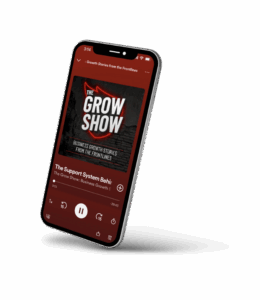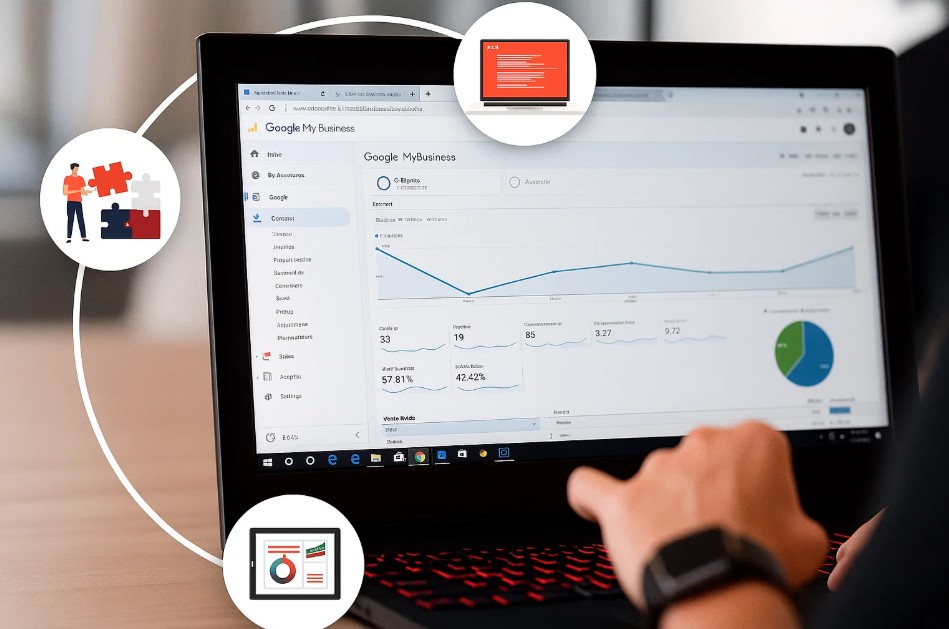In today’s digital landscape, mobile devices account for over 60% of global web traffic, making mobile website design not just a luxury but a necessity. Businesses that fail to optimize their sites for mobile risk losing visitors, conversions, and ultimately revenue. But designing for mobile isn’t just about shrinking desktop layouts—it requires a strategic approach that prioritizes speed, usability, and engagement on smaller screens.
This comprehensive guide dives into proven mobile website design tips and best practices that drive results. Whether you’re launching a new site or optimizing an existing one, these insights will help you create an intuitive, fast, and visually compelling mobile experience that keeps users coming back.
Contents
- 1 Understanding the Mobile User Experience
- 2 Responsive vs. Adaptive Design: Choosing the Right Approach
- 3 Key Mobile Design Elements to Enhance Engagement
- 4 Optimizing Forms for Mobile Conversion
- 5 Testing and Analytics: Continuous Improvement on Mobile
- 6 Future-Proofing Your Mobile Website
- 7 Conclusion: Mobile Design as a Business Imperative
- 8 Take Your Mobile Design Further with Abstrakt Marketing Group
Understanding the Mobile User Experience
Before diving into design specifics, it’s crucial to understand how mobile users interact with websites differently than desktop users. Mobile browsing often happens on the go, with limited attention spans and varying network speeds. This means your mobile site must be fast, easy to navigate, and focused on delivering key information quickly.
According to Google, 53% of mobile users abandon sites that take longer than three seconds to load. Moreover, 61% of users are unlikely to return to a mobile site they had trouble accessing, and 40% visit a competitor’s site instead. These statistics underscore the importance of a seamless mobile experience. The implications of these figures extend beyond mere user frustration; they can significantly impact your brand’s reputation and overall conversion rates. A well-optimized mobile site not only retains users but also encourages them to engage more deeply with your content, ultimately leading to higher sales and customer loyalty.
Prioritize Speed and Performance
Page load speed is the cornerstone of mobile UX. Slow-loading pages frustrate users and increase bounce rates. To optimize speed:
- Compress images: Use modern formats like WebP and serve appropriately sized images to reduce load times without sacrificing quality.
- Minimize HTTP requests: Combine CSS and JavaScript files where possible and eliminate unnecessary scripts.
- Leverage browser caching: Allow repeat visitors to load your site faster by storing resources locally.
- Use a Content Delivery Network (CDN): Distribute your content globally to reduce latency.
Implementing these tactics can reduce load times dramatically, keeping users engaged and improving search engine rankings. Additionally, consider utilizing tools like Google PageSpeed Insights or GTmetrix to analyze your website’s performance. These tools not only provide valuable insights into your current speed metrics but also offer actionable recommendations tailored to your specific site. Regularly monitoring your site’s performance can help you stay ahead of potential issues and ensure that your users enjoy a consistently fast experience.
Design for Thumb-Friendly Navigation
Mobile users primarily interact with their devices using thumbs, so designing with thumb reach in mind is essential. Place important buttons and navigation elements within easy reach, typically the lower half of the screen. Avoid small touch targets; buttons should be at least 44×44 pixels to prevent mis-taps.
Consider using a sticky navigation bar that remains accessible as users scroll. This improves usability by allowing quick access to menus or calls to action without excessive scrolling. Additionally, think about the overall layout of your content. Utilizing larger touch targets not only enhances navigation but also provides a more enjoyable user experience. Incorporating gestures, such as swiping or tapping, can further engage users and make navigation feel intuitive. By prioritizing thumb-friendly design, you create an environment where users can interact with your site effortlessly, leading to longer engagement times and higher satisfaction rates.
Responsive vs. Adaptive Design: Choosing the Right Approach
Mobile website design typically follows one of two approaches: responsive or adaptive. Understanding the differences helps you select the best method for your goals and resources.
Responsive Design
Responsive design uses flexible grids and media queries to adjust the layout dynamically based on screen size. It ensures a consistent experience across all devices and is generally easier to maintain since there is a single codebase.
Google recommends responsive design as the best practice for mobile-friendly sites because it simplifies SEO and ensures content parity between desktop and mobile. This approach not only enhances user experience but also improves loading times, as the same HTML and CSS are used across devices, reducing the need for additional resources.
Moreover, responsive design is particularly advantageous in an era where new devices with varying screen sizes are continually being released. By adopting a responsive framework, designers can future-proof their websites, ensuring they remain visually appealing and functional regardless of the device used to access them.
Adaptive Design
Adaptive design detects the user’s device and serves a tailored layout optimized for specific screen sizes. This method can deliver highly customized experiences but requires maintaining multiple versions of the site, increasing development and maintenance efforts.
Adaptive design is beneficial for complex sites that need to deliver vastly different content or functionality on mobile versus desktop. For instance, e-commerce platforms may choose adaptive design to optimize the shopping experience on mobile devices, offering features like simplified navigation and larger touch targets, which can significantly enhance usability.
However, the trade-off for this level of customization is the increased complexity in development. Each version of the site must be meticulously crafted and tested to ensure it meets the unique needs of its target device. This can lead to longer development cycles and potentially higher costs, making it crucial for teams to weigh the pros and cons carefully before committing to an adaptive strategy.
Key Mobile Design Elements to Enhance Engagement
Beyond technical setup, certain design elements are critical for creating an engaging mobile website that converts visitors into customers.
Clear and Concise Content
Mobile screens have limited real estate, so content must be concise and scannable. Use short paragraphs, bullet points, and descriptive headings to make information easy to digest. Prioritize essential content and avoid overwhelming users with too much text.
Focus on value-driven messaging that communicates benefits quickly. For example, instead of a long product description, highlight key features and customer benefits upfront.
Additionally, consider incorporating interactive elements such as collapsible sections or tabs to allow users to explore content at their own pace. This not only keeps the interface clean but also encourages deeper engagement as users can choose what information they want to delve into without feeling inundated. Furthermore, integrating user-generated content, such as reviews or testimonials, can enhance trust and provide social proof, making your messaging even more impactful.
Effective Use of Visuals
Visuals can enhance storytelling and break up text, but they must be optimized for mobile. Use high-quality images that load quickly and support your content. Avoid clutter and ensure visuals don’t distract from calls to action.
Incorporate icons and graphics that aid navigation and comprehension, such as intuitive menu icons or progress indicators during checkout.
Moreover, consider using videos or animations to convey complex ideas succinctly. A short, engaging video can capture attention and explain a product or service in a way that text alone cannot. Just ensure that these media elements are optimized for mobile viewing to prevent slow loading times, which can deter users. Additionally, leveraging infographics can effectively summarize data or processes, making them more accessible and visually appealing to your audience.
Prominent Calls to Action (CTAs)
CTAs drive user actions and should be impossible to miss on mobile. Use contrasting colors, clear language, and ample spacing around buttons. Position CTAs where users naturally pause, such as after product descriptions or at the end of content sections.
Test different CTA placements and wording to find what resonates best with your audience. Mobile users appreciate direct and simple prompts like “Buy Now,” “Get a Quote,” or “Sign Up.”
In addition to traditional CTAs, consider implementing micro-interactions that provide feedback when a user engages with a button, such as subtle animations or color changes. This not only enhances the user experience but also reinforces the action they just took. Furthermore, experimenting with urgency-driven CTAs, like “Limited Time Offer” or “Only a Few Left in Stock,” can create a sense of scarcity that encourages immediate action, driving higher conversion rates.
Optimizing Forms for Mobile Conversion
Forms are often the final step in the conversion funnel, so optimizing them for mobile is critical to reduce friction and increase submissions.
Simplify Form Fields
Ask only for essential information. Lengthy forms with many fields deter mobile users. Use single-column layouts to fit narrow screens and avoid horizontal scrolling. Additionally, consider the use of progressive disclosure techniques, where you can reveal additional fields only after the user has completed the initial ones. This approach not only keeps the interface clean but also encourages users to engage without feeling overwhelmed by the amount of information required.
Use Smart Input Types
Leverage HTML5 input types like “tel” for phone numbers or “email” for email addresses to trigger appropriate mobile keyboards. This reduces typing effort and errors. Furthermore, incorporating dropdowns or date pickers for fields like birthdates or location can enhance user experience by minimizing the need for manual entry. These smart input types not only streamline the process but also help ensure that the data collected is accurate and formatted correctly, which can be crucial for follow-up communications.
Enable Autofill and Validation
Support browser autofill to speed up form completion. Implement real-time validation to provide immediate feedback on errors, preventing frustration at submission. In addition to these features, consider providing clear instructions or examples directly within the form fields to guide users on what is expected. This can be particularly helpful for complex fields, such as password creation, where users may benefit from knowing the required character types or length. By enhancing clarity and support throughout the form-filling process, you can further reduce the likelihood of abandonment and improve overall conversion rates.
Testing and Analytics: Continuous Improvement on Mobile
Launching your mobile site is just the beginning. Continuous testing and data analysis are essential to refine the experience and maximize results. By embracing a culture of iterative improvement, businesses can ensure that their mobile platforms not only meet user expectations but also adapt to evolving trends and technologies.
Conduct Usability Testing
Gather real user feedback through usability testing on various devices and screen sizes. Observe navigation patterns, pain points, and areas of confusion. This qualitative data uncovers issues that analytics alone can’t reveal. In addition to traditional usability tests, consider employing remote testing tools that allow users to interact with your site in their own environments. This can yield insights into how real-world distractions and contexts affect user behavior, providing a more comprehensive understanding of the mobile experience.
Monitor Performance Metrics
Track key metrics such as bounce rate, session duration, conversion rate, and page load times using tools like Google Analytics and Google Search Console. Identify pages with poor performance and prioritize them for optimization. Additionally, delve into user demographics and behavior flows to understand who your audience is and how they navigate your site. This data can help tailor content and features to specific user segments, enhancing engagement and satisfaction.
A/B Testing for Mobile
Experiment with different design elements, CTAs, and content layouts through A/B testing to determine what drives better engagement and conversions. Mobile-specific tests ensure changes positively impact the unique mobile audience. Consider testing not just visual elements but also the timing and placement of notifications or promotional banners. Understanding when users are most receptive can lead to more effective communication strategies, ultimately driving higher conversion rates and customer loyalty.
Future-Proofing Your Mobile Website
Mobile technology and user expectations continue to evolve rapidly. Staying ahead requires adopting forward-thinking strategies. As more users rely on their smartphones for everything from shopping to social networking, ensuring your mobile site is not only functional but also engaging is paramount. This means not just keeping up with trends, but anticipating future developments in mobile technology and user behavior.

Embrace Progressive Web Apps (PWAs)
PWAs combine the best of web and app experiences, offering offline access, push notifications, and fast load times. Implementing PWA features can significantly enhance mobile user engagement and retention. By allowing users to install your website as an app on their home screen, you create a seamless experience that encourages repeat visits. Additionally, PWAs can be easily updated, ensuring that users always have access to the latest features and content without needing to download updates manually.
Optimize for Voice Search
With the rise of voice assistants, optimizing content for voice queries is becoming critical. Use natural language, answer common questions, and structure content with clear headings to improve voice search visibility. This shift towards conversational search means that businesses must rethink their keyword strategies, focusing on long-tail keywords and phrases that users are likely to speak rather than type. Furthermore, incorporating FAQ sections can not only enhance user experience but also improve your chances of being featured in voice search results, driving more organic traffic to your site.
Leverage Accelerated Mobile Pages (AMP)
AMP technology enables lightning-fast loading on mobile by stripping down unnecessary code. While not suitable for all sites, AMP can boost performance for content-heavy pages like blogs and news. The speed benefits of AMP can lead to lower bounce rates and higher user satisfaction, as visitors are less likely to abandon your site due to slow loading times. Moreover, AMP pages are favored by search engines, which can enhance your visibility in search results. As mobile internet speeds continue to improve, the expectation for instant access to information will only grow, making AMP a valuable tool in your mobile strategy.
Conclusion: Mobile Design as a Business Imperative
Mobile website design is no longer optional—it’s a fundamental component of digital success. By prioritizing speed, usability, and user-centric design, businesses can capture and retain the growing mobile audience. Implementing responsive layouts, optimizing content, and continuously testing will ensure your mobile site not only meets but exceeds user expectations.
Investing in mobile design translates directly into better engagement, higher conversions, and stronger brand loyalty. The time to act is now—embrace these mobile website design tips and best practices to future-proof your online presence and drive measurable results.
Take Your Mobile Design Further with Abstrakt Marketing Group
Ready to elevate your business’s mobile presence? Abstrakt Marketing Group is here to turn these insights into action. As a leader in B2B lead generation, we understand the importance of a mobile-optimized website in driving growth and success. Let us help you implement these best practices to not only meet but surpass your mobile audience’s expectations. Learn More about how our expertise can benefit your business.

Madison Hendrix
Madison has worked in SEO and content writing at Abstrakt for over 5 years and has become a certified lead generation expert through her hours upon hours of research to identify the best possible strategies for companies to grow within our niche industry target audiences. An early adopter of AIO (A.I. Optimization) with many organic search accolades - she brings a unique level of expertise to Abstrakt providing helpful info to all of our core audiences.
- Madison Hendrix#molongui-disabled-link
- Madison Hendrix#molongui-disabled-link
- Madison Hendrix#molongui-disabled-link
- Madison Hendrix#molongui-disabled-link







